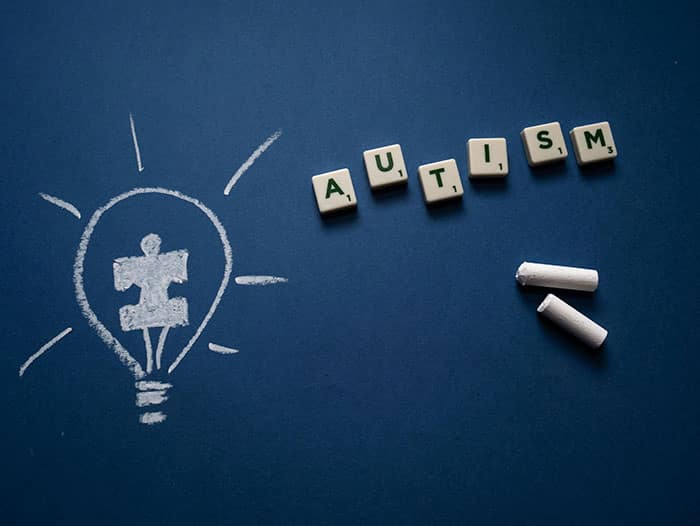Receiving an autism diagnosis can be a significant and emotional journey for families. As a parent or caregiver of an autistic child, you’re likely familiar with the unique challenges and joys that come with raising and supporting your child.

Autism manifests differently in each individual, and everyone diagnosed with autism has distinctive strengths, struggles, and ways of experiencing the world.
Understanding your child’s specific needs and offering the right support, whether it’s a quiet place for them to regroup when they’re stressed or a weighted blanket to help them feel secure, takes patience, practice, knowledge, empathy, and a strong support network.
What Are Autism Spectrum Disorders?
Autism Spectrum Disorder (ASD) encompasses a range of neurodevelopmental conditions that influence how a person perceives and interacts with their environment.
According to the World Health Organization (WHO), approximately 1 in 100 children are autistic, and while the exact cause of autism remains unknown, evidence suggests a strong genetic component, often resulting in more than one affected individual within a family.

Once diagnosed, autism is a lifelong condition; there is no known cure. However, autistic individuals can benefit greatly from therapies and behavioral interventions. While some may require substantial daily support, others live independently and thrive in many different aspects of life.
It’s also important to note that a significant number of autistic people also have an intellectual disability, which can add to the complexity of the care and education needed for the child to reach their fullest potential.
- What Is Autism Spectrum Disorder?
- ASD Overview
- ASD Risk Factors, Treatment, and Tips for Parents
- Autism Spectrum Disorders
- About Autism Spectrum Disorder
- Autism Spectrum Disorder (ASD)
- Facts About Autism Spectrum Disorder
How People With Autism May Behave
Autistic people often experience challenges with communication, social interaction, and daily functioning. They may have difficulty expressing their needs and emotions; starting, holding, and ending conversations; and interpreting verbal and nonverbal cues.
As a result, forming and maintaining strong relationships can be difficult, and some may prefer to be left alone and find new or unfamiliar situations to be unsettling.

Some autistic people may display repetitive behaviors, such as rocking, repeatedly tapping or knocking on surfaces, echolalia (the repeating of a sound, word, or phrase), or repeatedly touching objects, or they may develop deep, focused interests.
A preference for routine is common, and unexpected changes can lead to distress. Others may self-harm or have an emotional outburst, such as yelling or running away.
Sensory sensitivities are another hallmark of autism. Autistic individuals may be hypersensitive or hyposensitive to light, sound, smell, touch, or taste. For example, loud noises or bright lights can feel overwhelming, while certain textures of food or clothing might be intolerable.

A heightened sensitivity to touch can manifest as withdrawing from physical contact, avoiding certain textures of food, disliking messy activities, touching objects only with fingertips, or resisting hair or skin washing. Creating supportive environments that respect their individual sensory needs is crucial.
Despite these difficulties, many autistic individuals have exceptional abilities in areas like mathematics, visual arts, or music. Do not assume that every individual with an autism diagnosis excels in these areas, but do be aware that anyone with an autism diagnosis has the potential to excel in an area that they are interested in in varying ways and degrees.
- Common Behavior Characteristics of Individuals With Autism Spectrum Disorder
- Characteristics of Autism
- Challenging Behaviors Related to Autism
- Characteristics of Individuals With an ASD
- How Autism Shapes Behavior Patterns
- High-Functioning Autism
How to Support People With Autism
Effective support starts with empathy and understanding. When an autistic person says something that seems offensive, it’s important to take a moment and consider that it may not have been intentional.
They may simply be expressing their truth without grasping nuances, cultural norms, and how their words may impact others.

Supporting an autistic person can also include:
- Respecting Their Interests: What may seem unimportant to you might be deeply meaningful to them.
- Creating Structured Routines: Predictability contributes to comfort. Try to schedule consistent mealtimes, activities, and daily rituals.
- Preparing for Changes: If a routine must change, inform the individual ahead of time to give them the opportunity to adjust to the change in plans. This may help reduce anxiety.
- Managing Emotions Calmly: During moments of anger or frustration, give the individual time and space to calm down. Responding with patience and a calm tone is essential.
- Monitoring Behavior: Keeping track of reactions and triggers can help you identify environments or situations that require additional attention or may need to be avoided, if possible.
- How Can I Help Someone With Autism?
- Tips for Talking to Adults on the Autism Spectrum
- Supporting Parents Caring for Autistic Children
- How to Support an Autistic Person
- The Importance of Community Support for Families of Autistic People
The Impact on Families
Families play a critical role in caring for autistic children and individuals, and the impact on them can be profound. Caregivers may experience significant emotional strain, including feelings of stress, worry, sadness, or anger.

The demands of care can lead to employment changes, such as reducing hours or leaving the workforce entirely. And siblings may notice that their autistic family member is different but not understand why.
They are often accepting of their sibling’s diagnosis but may still struggle with mixed emotions, like jealousy over the additional attention their sibling receives or embarrassment or frustration due to others not understanding autism.
They may also be worried about their own children potentially having autism or about future caregiving responsibilities.
- Family Quality of Life and Autism Spectrum Disorder
- Effects on Siblings of Children With Autism
- How Autism Affects Families: The Good and Bad Sides
- Managing Family Life With an Autistic Child
- The Experiences of Families Raising an Autistic Child
- The Impact of Autism on Family Dynamics and Relationships
Where to Find Information and Support
Families may also experience social isolation, especially when others react negatively or fail to understand behaviors stemming from autism. This can feel very frustrating and disheartening, but support for autistic children and their families is available.
Local social services can assess individual and family needs and provide support such as daytime activities and programming options, home adaptations, one-on-one support, and respite care.
Therapies and professional services may also be available to address speech and language development, sensory and motor issues, and behavioral and emotional regulation and management.

Educational assessments from school psychologists can help ensure that appropriate support is offered and maintained in order to meet the best interests of the child. And community groups can provide resources, emotional support, and information.
Local support organizations may also offer training sessions and seminars for caregivers, some led by autistic individuals sharing their perspectives and lived experiences.
- About the Autism Society of America
- Association for Autism and Neurodiversity (AANE)
- Autism Science Foundation
- The Color of Autism Foundation
- MyAutismTeam
Weighted Blankets as a Tool in Autism Therapy
Another way to support an autistic person is to make sure that they have the tools that they need to live a comfortable and fulfilling life. One of these tools may be a weighted blanket.
The use of weighted blankets is rooted in sensory integration theory, which suggests that deep pressure stimulation may have a soothing effect on the nervous system, especially for those who are highly sensitive to touch.

Weighted items like blankets, stuffed animals, or vests may help soothe touch hypersensitivity by providing consistent, firm pressure.
Proprioception, the body’s ability to sense its positioning, movement, and action, contributes to a person’s feeling of being grounded and secure, and a weighted blanket on their bed can support this by enhancing bodily feedback and reducing anxiety.


